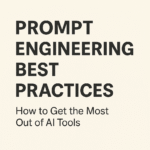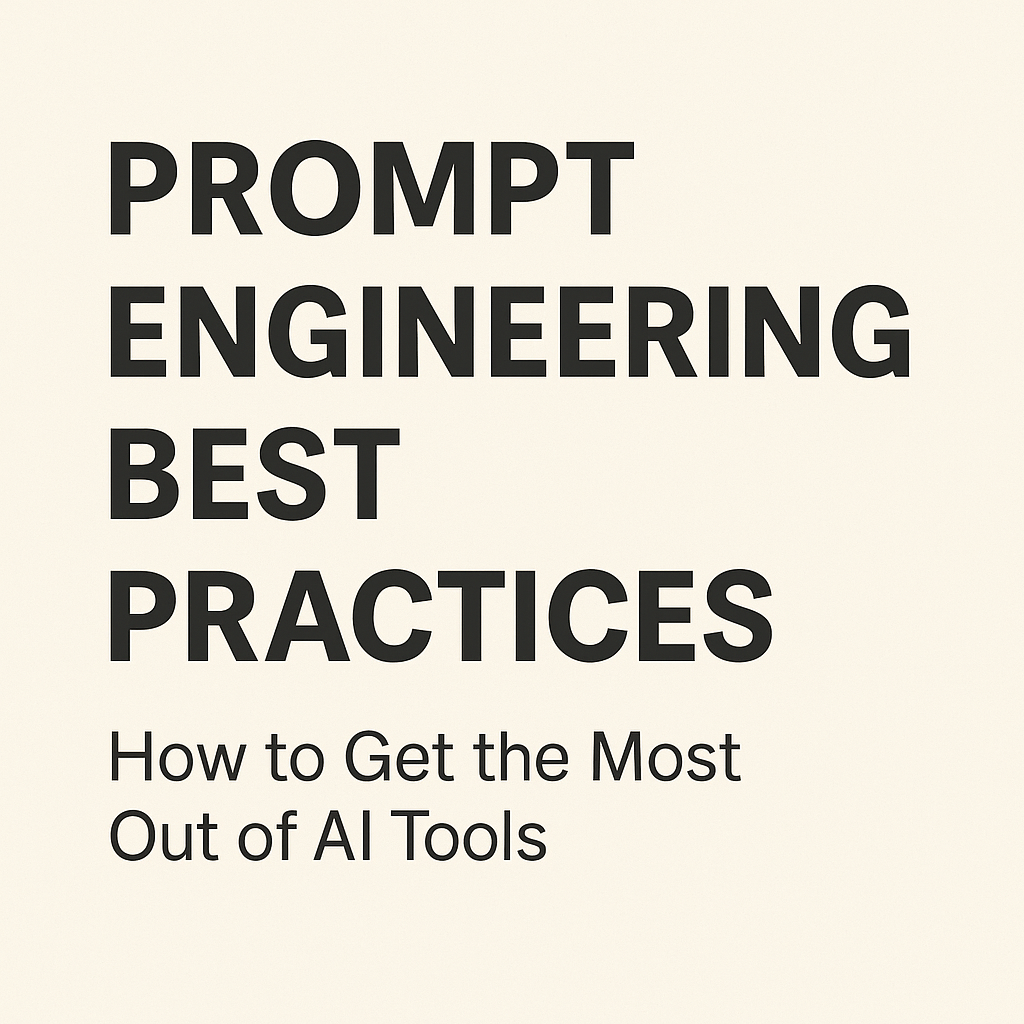Prompt engineering is the secret sauce behind effective AI interactions. Whether you’re using ChatGPT, Claude, or any other large language model (LLM), how you craft your prompt directly influences the accuracy and relevance of the response. In this post, we’ll cover the top prompt engineering best practices, complete with examples and tips to boost your AI prompt skills.
🧠 What Is Prompt Engineering?
Prompt engineering is the art and science of crafting effective instructions or queries to guide AI models. Think of it as asking the right question in the right way — it helps the model better understand your intent and provide accurate, useful responses.
🔥 Best Practices for Prompt Engineering
1. Be Concise and Clear
Avoid wordy or overly complex prompts. Short, clear sentences are easier for AI to interpret and respond to.
🛑 Not Recommended:
What do you think could be a good name for a flower shop that specializes in selling bouquets of dried flowers more than fresh flowers?
✅ Recommended:
Suggest a name for a flower shop that sells dried flower bouquets.
2. Be Specific and Well-Defined
Vague prompts lead to vague answers. Instead, define your request with specific criteria or context.
🛑 Too Generic:
Tell me about Earth.
✅ Specific and Focused:
Generate a list of features that make Earth unique among planets.
3. Ask One Task at a Time
Combining multiple questions in a single prompt can confuse the model. Break them into separate, focused prompts.
🛑 Not Ideal:
What’s the best method of boiling water and why is the sky blue?
✅ Better:
What’s the best method for boiling water?
Why is the sky blue?
4. Watch Out for Hallucinations
AI can sometimes generate confident but incorrect responses. These are known as hallucinations. Be cautious with facts, and don’t rely solely on citations unless they’re verified.
📌 Tip: Use temperature settings. For creative tasks, a higher temperature (e.g., 1.0) encourages more imaginative responses — which may include hallucinations.
Example:
Prompt: What day is it today? (High temperature might produce a fictional date or event.)
5. Use System Instructions for Guardrails
System-level prompts help guide the AI’s behavior and reduce irrelevant or off-topic responses.
Example for a travel chatbot:
🛑 Basic Prompt:
Tell me about the Colosseum.
✅ With System Instruction:
[System: You are a travel assistant specializing in Italian tourist attractions.]
Describe the history and tourist tips for visiting the Colosseum in Rome.
6. Include Examples to Improve Response Quality
When possible, provide sample formats or examples in your prompt. This helps guide the AI to generate content that meets your expectations.
Prompt Example:
Write a job description for a data analyst. Example format: Job title, responsibilities, qualifications, location, and application instructions.
🎯 Final Thoughts
Prompt engineering is a powerful skill for anyone working with AI tools. By being concise, specific, and intentional with your prompts — and using tools like system instructions and examples — you can drastically improve the output quality of language models.
🔍 Ready to Experiment?
Try tweaking your own prompts using these best practices and see the difference. Whether you’re automating tasks, generating content, or building chatbots, effective prompt engineering is the key to better results.











